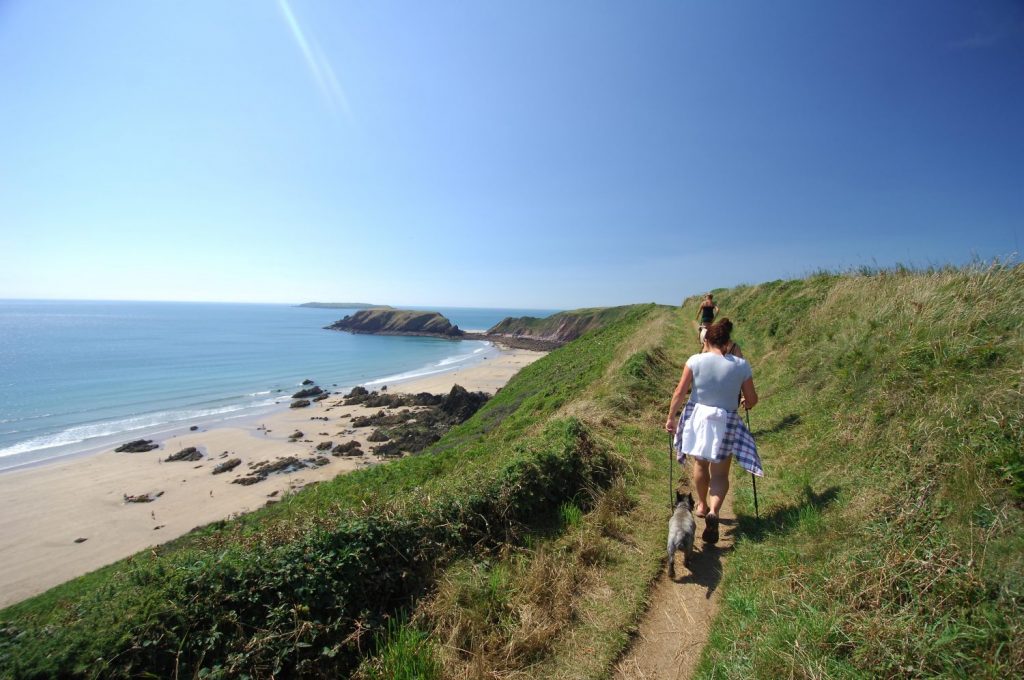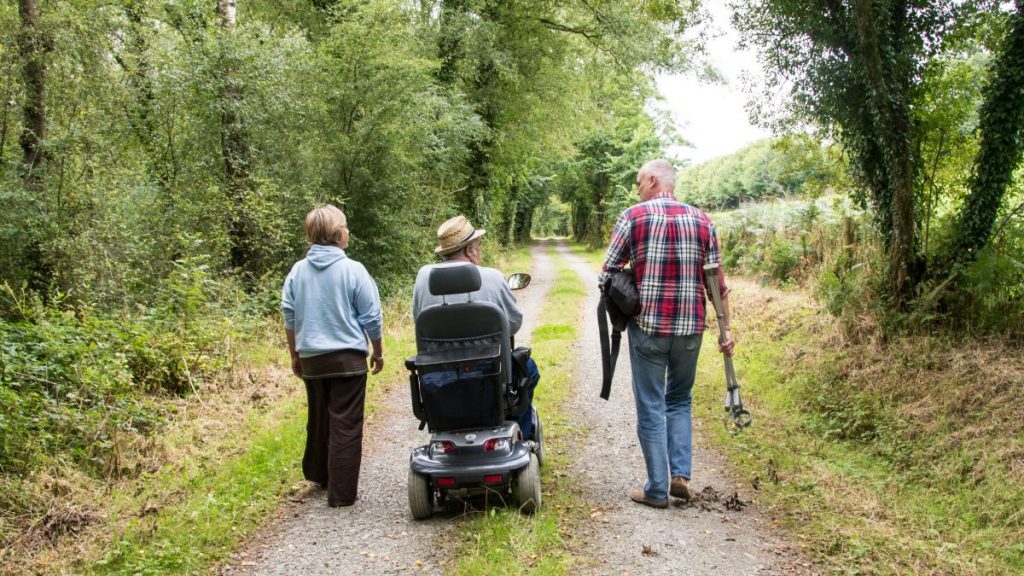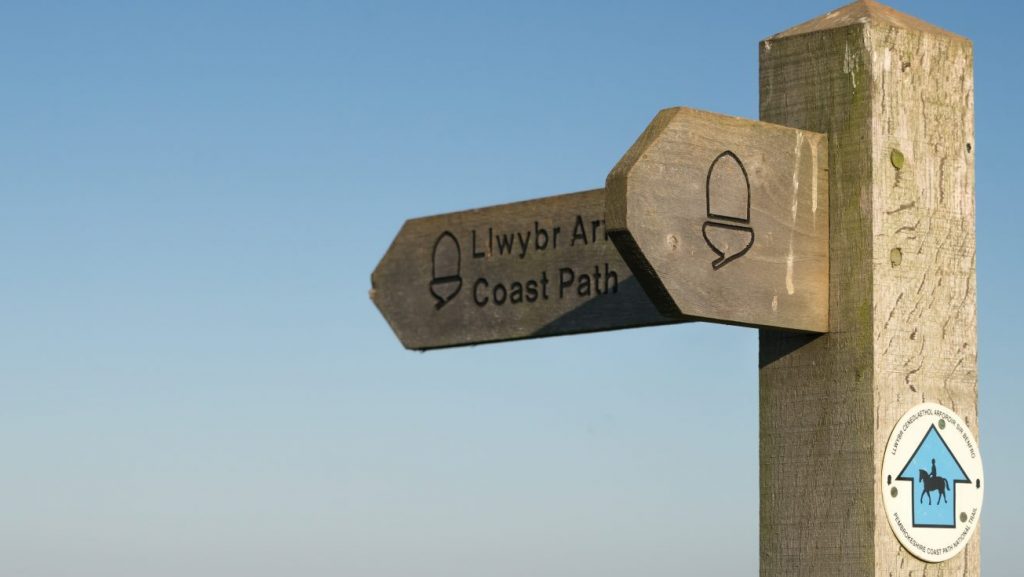DISTANCE/DURATION: 4.0 miles (6.4 km) 3 hours.
PUBLIC TRANSPORT: *Puffin Shuttle 400 to Martin’s Haven (*seasonal, hail & ride).
CHARACTER: Island walk, cliff edge LOOK OUT FOR: Puffins, razorbills, guillemots (April to July), choughs, short-eared owls, gulls, seal. Bluebells in May/June and heather in August/September.
CAUTION: NO DOGS ALLOWED ON ISLAND. Stay on footpaths at all times. Boat fare & Island landing fee. Please telephone Dale Sailing (01646 603123) for boat crossing days/times etc.
The largest of the Pembrokeshire islands, Skomer, is a fascinating place to explore. Most visitors come to the national nature reserve to see its wild birds and plants, at their best in spring and early summer.
Skomer has the largest colony of seabirds in southern Britain. In May and June thousands of razorbills and guillemots, along with fulmars and kittiwakes, raise their young on cliff ledges while puffins nest in burrows in the clifftop turf.
The island also has the largest colony of Manx shearwaters in the world. More than 100,000 pairs of shearwaters nest in burrows on the island.
They spend their days at sea and return to feed their young only at night; the birds’ eerie cries once gave Skomer a reputation as the Island of Lost Souls.
Look out too for grey seals, porpoises and dolphins. The island is awash with colour in spring when bluebells and red campion flourish in sheltered areas, while thrift and sea campion cover clifftops.
Skomer has a history of human occupation too. The solitary standing stone known as the Harold Stone is said to date back to the Bronze Age. But the most important archaeological remains are later, dating from the Iron Age – between 650 BC and 100 AD.
At that time more than 200 people are thought to have lived on the island. Look for clues to this Iron Age community, including the traces of four settlements and a small fort.
The island also has some of the best preserved Iron Age field systems in Britain. In spring, the 2,000 year old field boundaries are clearly visible – the best place to see them is close to the inlet called The Wick.
Later the island was probably a temporary stop-off for Vikings. The island’s name is thought to be of Scandinavian origin.
Please note: there are no catering facilities on Skomer.
Find this Walk
Grid ref: SM724094
SAFETY FIRST!
- Take great care when on the Coast Path
- Stay on the path and away from cliff edges
- Wear boots and warm, waterproof clothing
- Take extra care in windy and/or wet conditions
- Always supervise children and dogs
- Leave gates and property as you find them



